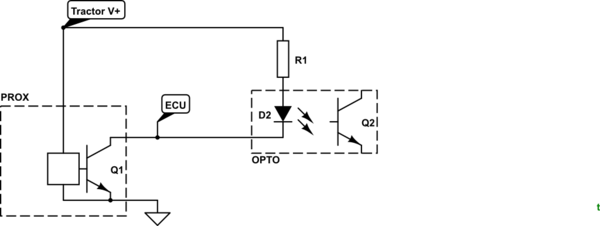Some background, I have a tractor that I want to make semi-autonomous.
The tractor has it own PLC and an NPN Proximity sensor to measure speed.
I have industrial PLC by Unitronics (V130) with I/O that can act as NPN or PNP. I wish to connect my PLC to the same sensor and save me a hassle to install another one next to it.
I wonder if it safe (no harm to a sensor or either of the PLC) to split the sensor wires and if it possible to sense the sensor in both PLC?
The sensor model is NBN8-12GM50-E1-V1 by Pepperl-Fuchs Datasheet: https://files.pepperl-fuchs.com/webcat/navi/productInfo/edb/293454-0057_eng.pdf?v=20180423144546
EDIT: The two PLCs don't share the same power source and ground
Thank you



